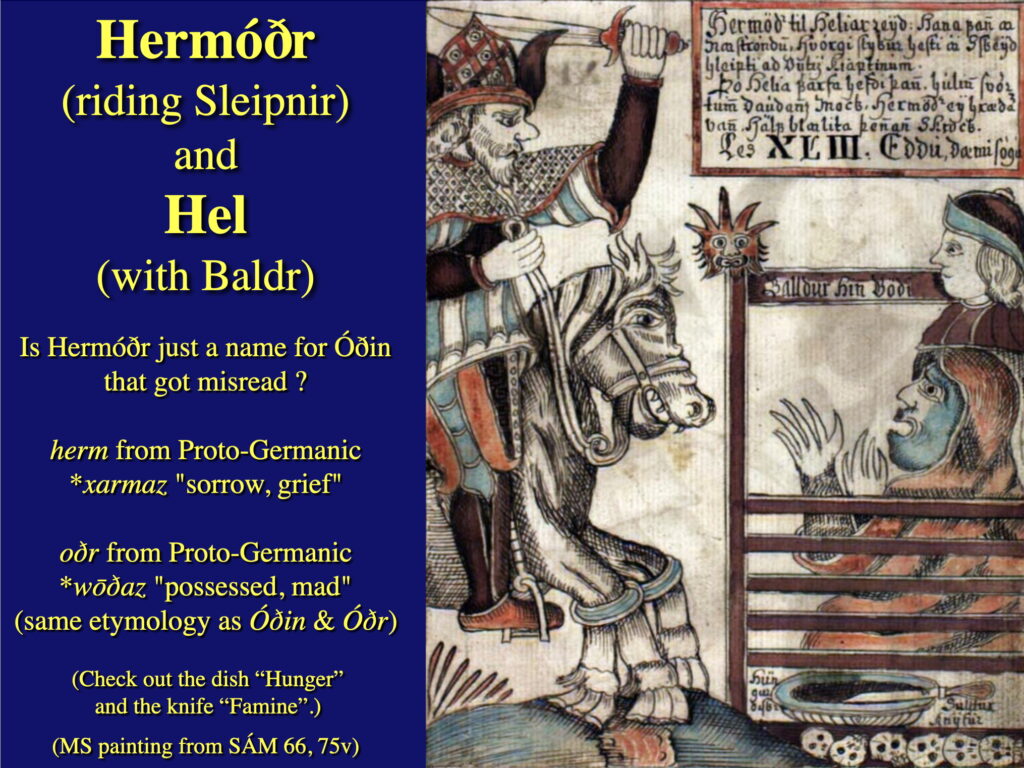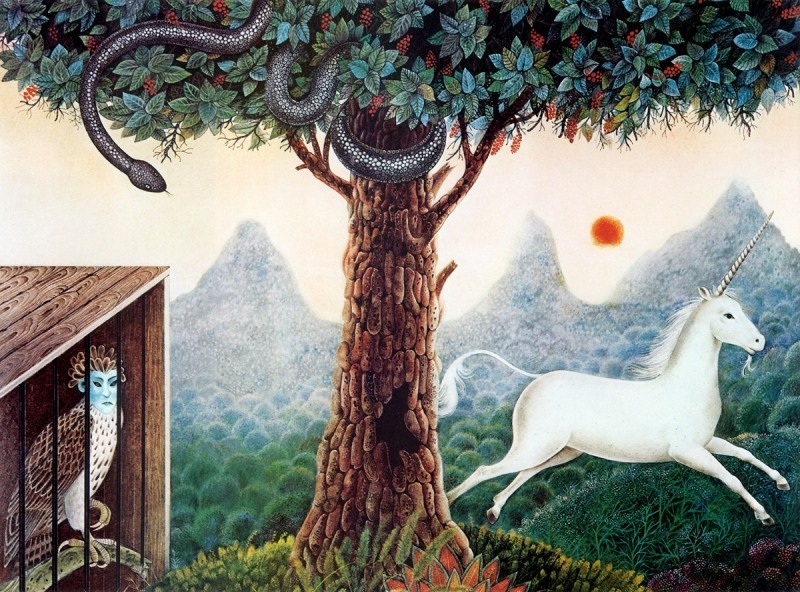I was thinking the other day about Hengist and Horsa, the two Saxon chieftains/gangsters who show up to assist and then overpower the usurper Vortigern in the run-up to King Arthur’s origin story. Horsa (Horsus in Geoffrey of Monmouth’s Latin) clearly means “horse” in modern English, but WTF is a hengist? Turns out that also means “horse” (going back to Proto-Germanic *xanxistaz; so says Orel). Horsa doesn’t really do much in the story; Hengist always takes the lead, bringing in Saxon goons and becoming Vortigern’s father-in-law, and in general making V’s life a living hell.
I wonder if “Horsa” didn’t start life as a more-transparent translation of Hengist’s name (“Hengist–i.e. Horse”), and then the name got promoted to full personhood by a storyteller who didn’t know the two words meant effectively the same thing.
Vortigern’s situation with the Saxons reminds me of a “bust out”, where organized crime infiltrates a business and then runs it into the ground (e.g. the Sopranos episode 2.10 “Bust Out”). Fortunately that situation could never happen to the U.S. govt. I guess.
Another thing I found out while horsing around was that English horse is cognate with Latin currere “to run” (going back to PIE *kers- “run”). Which makes sense, since initial k sound in Latin often corresponds to initial h in English (cf English horn and Latin cornu).
The h/k correspondence got me thinking about Hermóðr, Ódin and Frigg’s son who borrows Sleipnir, his dad’s eight-legged horse. The -óðr is pretty clearly the same root as in Óðin’s name, but what would *kerm- mean in Proto-Germanic or PIE? I looked it up in Orel’s Handbook of Germanic Etymology and it sort of snapped into focus.
Maybe there is no Hermóðr really. Maybe it’s just another name of Óðin that Snorri hypostasized into a son of Óðin. That’s explain why he’s riding Slepnir, among other things.
So my Norse Myth students got a generous side-portion of Germanic philology yesterday.


